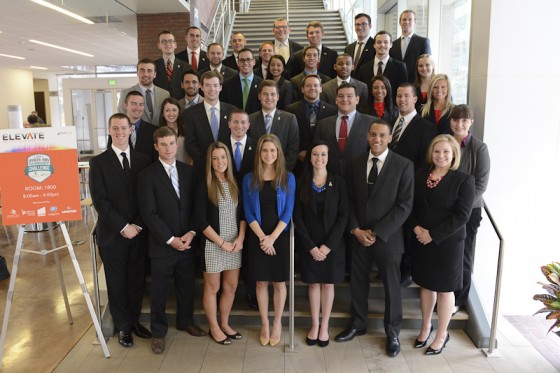 We normally pass, on blogging about briefs filed by a party before a court ruling, but Texas’ litigation against the EEOC and U.S. Attorney General Eric Holder is not shaping up to be just an everyday lawsuit.
We normally pass, on blogging about briefs filed by a party before a court ruling, but Texas’ litigation against the EEOC and U.S. Attorney General Eric Holder is not shaping up to be just an everyday lawsuit.
This is a must read for employers. It goes to the heart of what the EEOC is doing these days, and how it is carrying out its duties.
Case Background
In April 2012, the EEOC issued guidance urging businesses to avoid a blanket rule against hiring individuals with criminal convictions, reasoning that such rules could violate Title VII if they create a disparate impact on particular races or national origins. Like various other states, Texas has enacted statutes prohibiting the hiring of felons in certain job categories. In November 2013, Texas sued the EEOC, seeking to enjoin the enforcement of this guidance, which Texas has nicknamed the “Felon Hiring Rule.” In March of this year, Texas amended its complaint to include more specific allegations of injury. For example, Texas alleged that the EEOC issued a right-to-sue letter to an applicant who had been rejected by the Texas Department of Public Safety after disclosing on his application that he had been convicted of a felony (unauthorized use of a motor vehicle). Texas claimed that the job involved “access to sensitive personal information for all 26 million Texans.”
Against this backdrop is a growing firestorm of litigation initiated by the EEOC over hiring checks based on criminal backgrounds. We have blogged about those cases and rulings previously (here, here, here, here, and here).
Earlier this month, the EEOC filed a motion to dismiss Texas’ lawsuit. In its motion, the EEOC offered three primary arguments. First, the EEOC contends that the U.S. District Court lacks jurisdiction to hear the case because the EEOC’s guidance is not legally binding and does not constitute a final agency action. Second, and in part because the EEOC claims its guidance has no binding authority, the EEOC argues that Texas lacks standing to pursue its claims. As the EEOC stated, “[t]he state may disagree with the EEOC’s interpretation of the law, but that does not imbue the interpretation with any legal consequences.” Third, the EEOC said the state’s claims should be dismissed because they are not ripe.
The State Of Texas Replies
In its brief, Texas started by pointing out other cases in which the EEOC pursued administrative investigations and lawsuits against employers and invoked its 2012 guidance. Making the point that the EEOC was attempting to have its cake and eat it too, the state characterized the EEOC as arguing that the guidance is “not worth the paper it’s printed on—even though it urges other courts to defer to it.”
Having set the theme, Texas turned to its legal arguments. The state argued that whether or not the 2012 guidance was a “final agency action” was not a jurisdictional issue, as the EEOC contended it was. Nevertheless, the state explained why the 2012 guidance in fact constituted a “final agency action” under the Administrative Procedure Act. Texas argued that the EEOC’s argument, that only those rules and regulations that were entitled to Chevron deference were reviewable, improperly narrowed the term “action” in a way that “no case from any court in the history of the Nation” had adopted. Texas also pointed out that the EEOC could not prevent review under the APA simply by re-characterizing its process in order to avoid judicial scrutiny under the Act.
Turning to the standing issue, Texas identified three types of injury it has suffered, each of which independently established Article III standing, including (i) as an employer, the State of Texas is subject to the EEOC’s “Felon Hiring Rule,” and the EEOC issuance of a right-to-sue letter to an applicant denied a job after a criminal background check demonstrates that the state has been subjected to enforcement of the rule; (ii) Texas is seeking to enforce its right to participate in the notice-and-comment provisions of the APA, and the EEOC’s failure to comply with the APA had denied Texas its right to do that; and (iii) Texas has been injured by the EEOC’s purported preemption of the State’s laws. As evidence of this final injury, Texas pointed to the EEOC’s own website, which states that the Felon Hiring Rule “says that state and local laws or regulations are preempted by Title VII” if they cause a disparate impact.
On the ripeness question, Texas argued that, despite the EEOC’s attempts to recast its 2012 guidance as not requiring “individualized assessments” of all job applications, the case remained ripe for adjudication because it presents the “purely legal question” of whether “the State of Texas can continue to follow its facially neutral blanket no-felons policies …or whether the state must abandon those facially neutral policies.”
Implications for Employers
In defending against Texas’ case, the EEOC may have compromised future efforts to enforce its “guidance” against employers in Texas and other jurisdictions. To the extent the EEOC attempts to rely upon its 2012 statements as the basis for prosecuting disparate impact cases focused on criminal background check practices, particularly in cases where the EEOC alleges that an employer willfully violated Title VII, employers need only turn to the EEOC’s representations to the U.S. District Court for fodder in their own defense. Stay tuned for the upcoming ruling in this case.
This column previously appeared on the Seyfarth Shaw blog site.



